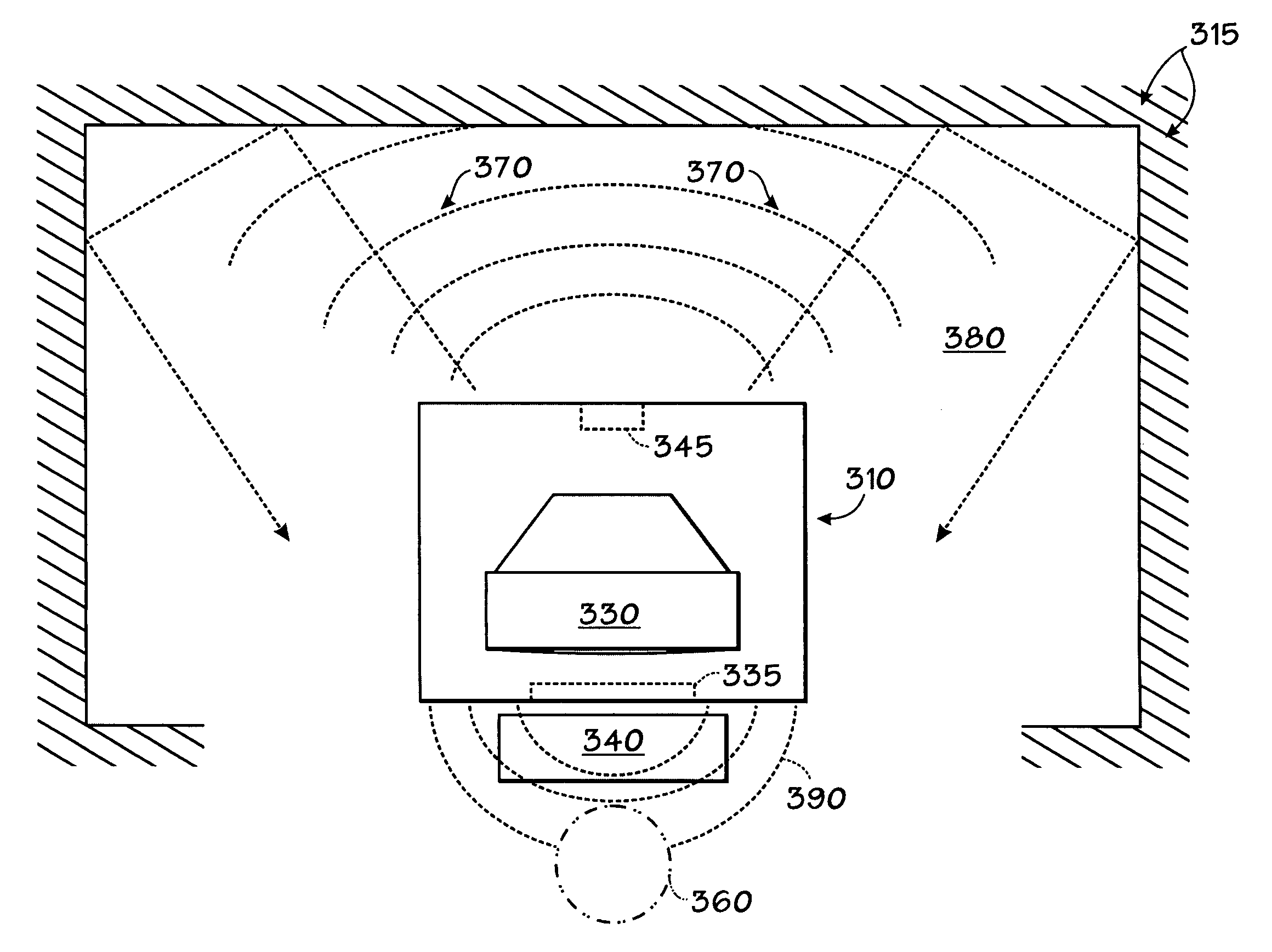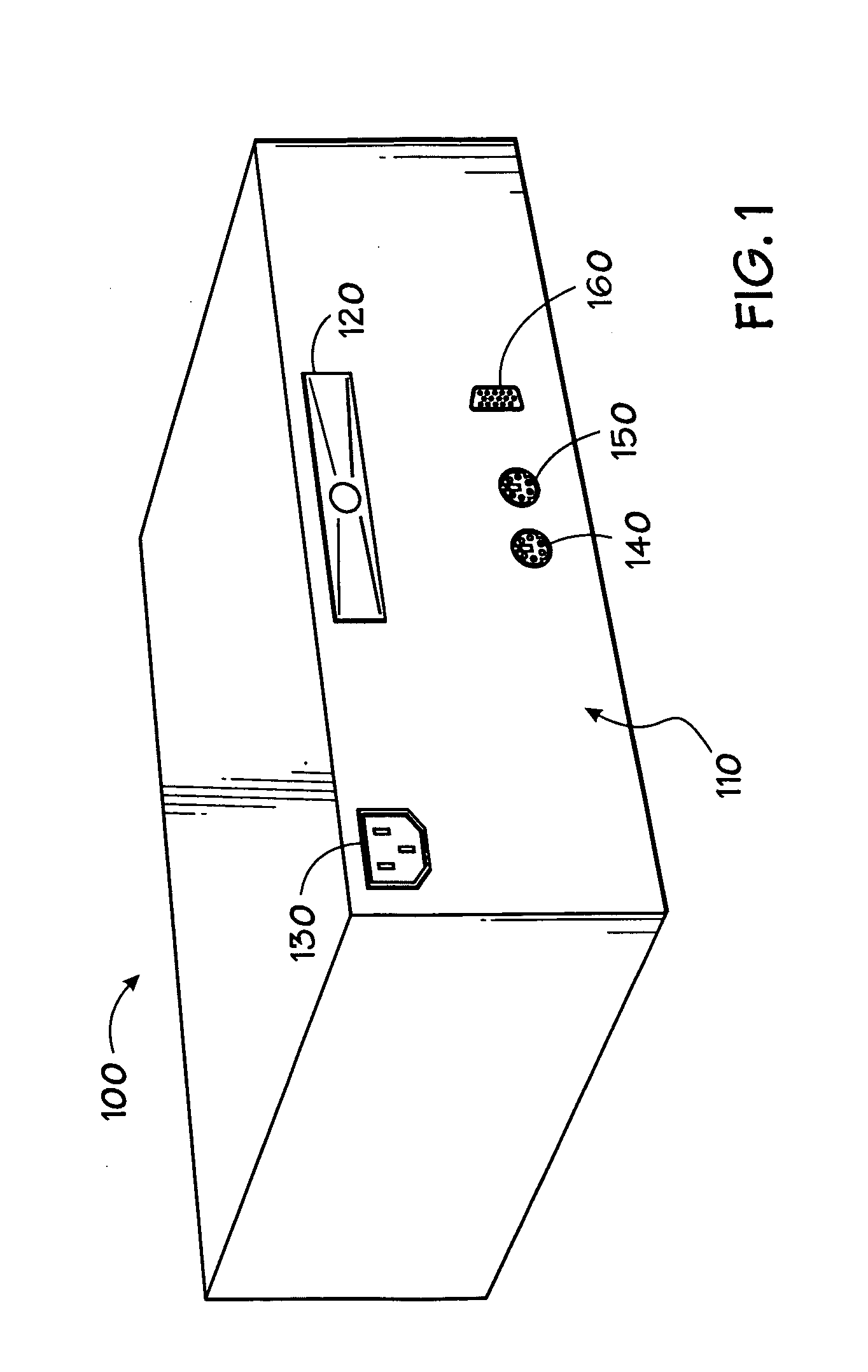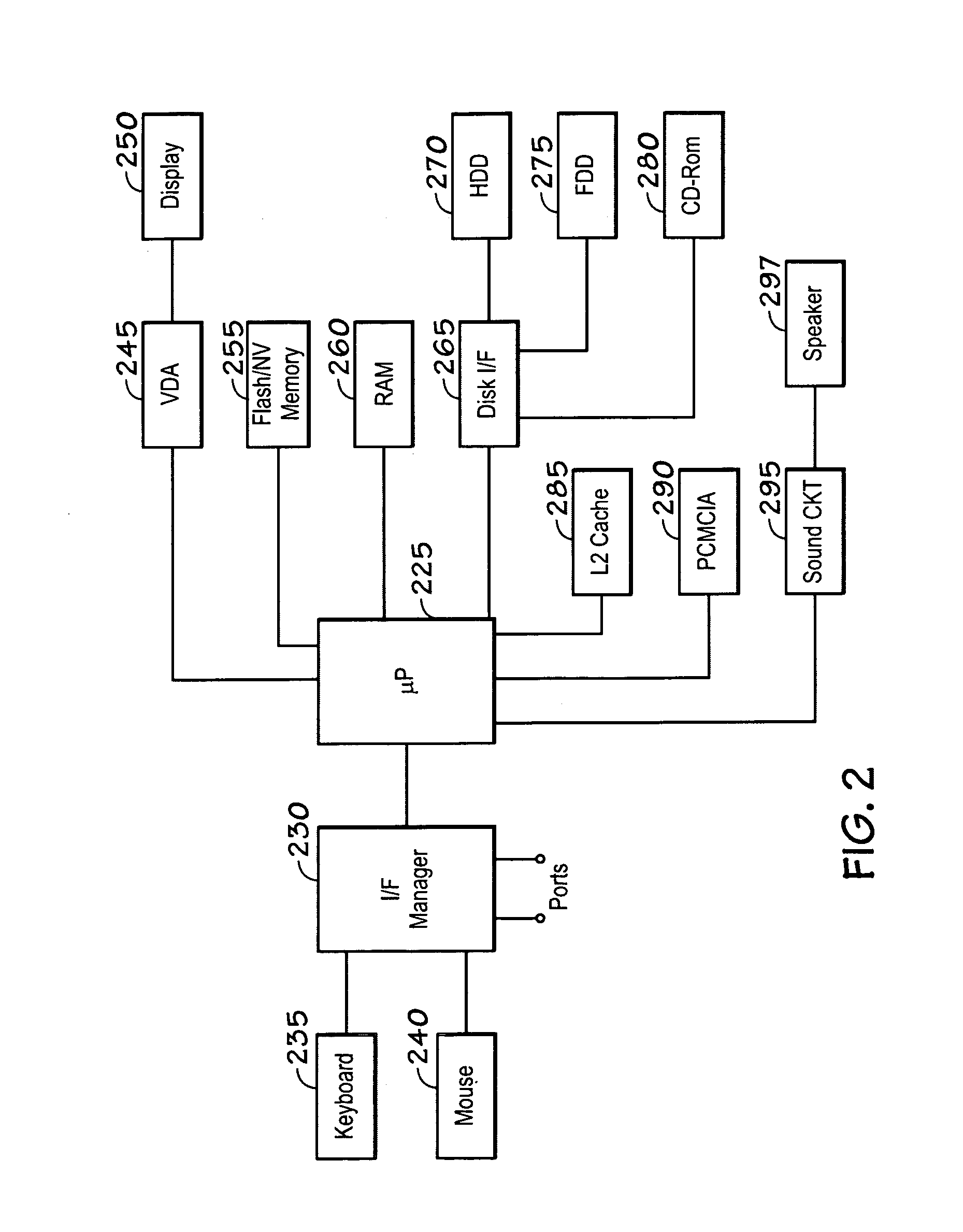Computer with acoustic driver built into acoustically leaky chassis
- Summary
- Abstract
- Description
- Claims
- Application Information
AI Technical Summary
Benefits of technology
Problems solved by technology
Method used
Image
Examples
embodiment
Sample Embodiment
[0073]FIG. 1 shows a sample computer system according to the presently preferred embodiment. A rear view of computer system 100 shows a back panel 110 comprising a rear-firing acoustic driver designed for free-space operation 120, a power connector 130, a keyboard connector 140, a mouse connector 150, and a display connector 160. The driver 120 preferably has a QTS in the range of 0.65 to 0.8.
[0074]FIG. 2 shows a block diagram of the electrical organization of a sample computer system according to the presently preferred embodiment. The computer system includes in this example: user input devices (e.g. keyboard 235 and mouse 240); at least one microprocessor 225 which is operatively connected to receive inputs from said input device, through an interface manager chip 230 (which also provides an interface to the various ports); a memory (e.g. flash or non-volatile memory 255 and RAM 260), which is accessible by the microprocessor; a data output device (e.g. display 2...
PUM
 Login to View More
Login to View More Abstract
Description
Claims
Application Information
 Login to View More
Login to View More - R&D
- Intellectual Property
- Life Sciences
- Materials
- Tech Scout
- Unparalleled Data Quality
- Higher Quality Content
- 60% Fewer Hallucinations
Browse by: Latest US Patents, China's latest patents, Technical Efficacy Thesaurus, Application Domain, Technology Topic, Popular Technical Reports.
© 2025 PatSnap. All rights reserved.Legal|Privacy policy|Modern Slavery Act Transparency Statement|Sitemap|About US| Contact US: help@patsnap.com



